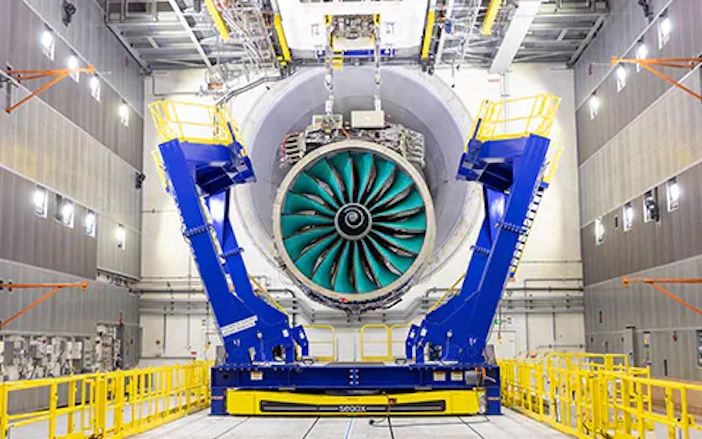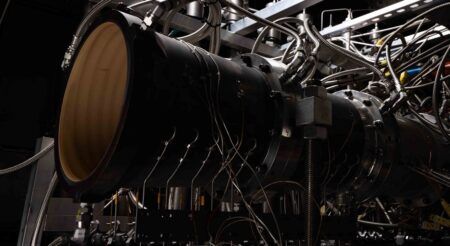Rolls-Royce has successfully completed the first tests of its UltraFan engine technology demonstrator.
The tests took place in Testbed 80 in Derby, UK, the world’s largest indoor aero-engine testing facility.
UltraFan is the first time in 54 years that the company has tested a brand-new engine architecture. According to Rolls-Royce UltraFan delivers a 10% efficiency improvement over the Trent XWB.
Although there are no customers for an UltraFan engine, Rolls-Royce plans to transfer technologies from the UltraFan development program to current Trent engines.
In the longer term, the company says UltraFan’s technology is scalable from 25,000-110,000 lbs of thrust and could be used to power new narrowbody and widebody aircraft anticipated in the 2030s.
Tufan Erginbilgic, CEO of Rolls-Royce said, “The UltraFan demonstrator is a game changer – the technologies we are testing as part of this program have the capability to improve the engines of today as well as the engines of tomorrow.
“We are witnessing history in the making – a step-change in engine efficiency improvement. When combined with Sustainable Aviation Fuels, more efficient gas turbine engines will be key to hitting the industry’s target of Net Zero flight by 2050. Today we are closer to achieving this ambition.
The first tests were conducted using 100% Sustainable Aviation Fuel (SAF). The SAF was derived primarily from waste-based sustainable feedstocks such as used cooking oils and was provided by Air bp.
UltraFan was first unveiled publicly in 2014 and uses a geared design not used in an engine as large as UltraFan before. The geared design delivers more efficient power for the high-thrust, high bypass ratio engines of the future and has run at 64MW.
Other key features of the demonstrator include the use of the Advance3 core architecture, combined with the ALECSys lean burn combustion system, to maximize fuel burn efficiency and reduce emissions and the use carbon titanium fan blades and a composite casing
Testing of the demonstrator has been supported by the UK Government through the Aerospace Technology Institute (ATI), Innovate UK; the EU’s Clean Sky programmes plus LuFo and the State of Brandenburg in Germany.





